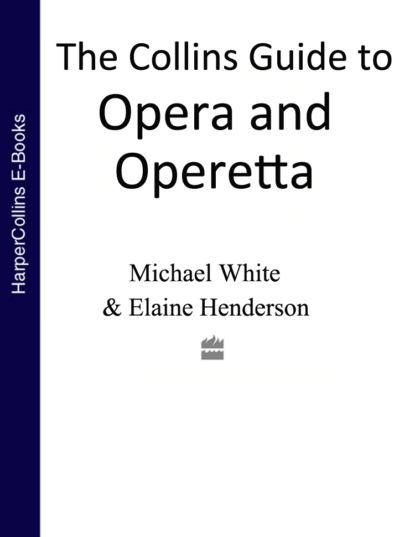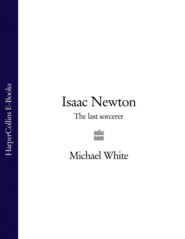По всем вопросам обращайтесь на: info@litportal.ru
(©) 2003-2024.
✖
The Collins Guide To Opera And Operetta
Автор
Год написания книги
2018
Настройки чтения
Размер шрифта
Высота строк
Поля
Mezzo-soprano
Elvira, Lord Walton’s daughter
Soprano
Synopsis of the Plot
Setting: A fortress outside Plymouth during the English Civil War
ACT I Elvira has finally overcome her father’s objection to her marriage to the Cavalier, Arthur Talbot, leaving Richard Forth a disgruntled and rejected suitor. To Elvira’s joy, distant horns announce Arthur’s impending arrival and he sweeps in in great style, bringing gifts that include a superb white bridal veil for his betrothed. Lord Walton gives Arthur and Elvira a safe conduct pass, saying that he cannot attend the wedding because he must escort a female prisoner, a suspected spy, to London. The prisoner is brought in and Arthur recognises her as the widow of the executed Charles I. Arthur knows that, if anyone finds out who she is, she will be murdered, and he resolves to help her escape. Draping Elvira’s veil over Henrietta’s head, he smuggles her out of the fortress, intercepted only by Richard, who, seeing the woman is not Elvira, is glad to see Arthur go and hopes that he may now win Elvira’s love. On discovering her apparent desertion Elvira loses her reason.
ACT II Elvira’s madness is observed at length in the famous Mad Scene, but the act closes on George Walton and Richard Forth as they confirm their readiness to fight to the death for the Puritan cause and, if necessary, to kill Arthur Talbot.
ACT III Arthur has now delivered Henrietta into safe keeping and is a fugitive. Nevertheless he risks his life to return to Elvira who is so shocked that she seems, partially, to regain her senses. But her obviously fragile mental state deeply disturbs Arthur and he refuses to leave her, even when he hears his Puritan enemies approaching, although he knows that capture will mean death. But, just as he is about to be summarily executed, news arrives of Cromwell’s victory and the granting of a general amnesty. Elvira’s joy finally restores her to sanity, Arthur is a free man and the lovers are united.
Music and Background
Written for Paris, I Puritani is generally considered the most sophisticated – though perhaps among the less dramatic – of Bellini’s opera scores, with a finer grasp of orchestration (the composer’s undeniable weak point) than he showed elsewhere. There is a pervasive militarism in the music, with prominent brass and percussion, and marching rhythms that bear out Bellini’s own description of his work here as ‘robust’ and ‘severe’. But there is also brilliance in the vocal writing, which demands a strong quartet of principal singers and, especially, a tenor with good top notes.
Highlights
Elvira’s Act II ‘Qui la voce’ is one of the more affecting mad scenes in Italian opera; and the duet ‘Suoni la tromba’, also in Act II, is a famously stirring example of Bellini’s martial music.
Did You Know?
Bellini wrote no comedies. He always chose to place his characters in what he termed situazioni laceranti – heart-rending predicaments.
George Bernard Shaw disliked the opera intensely, saying that the music ‘has so little variety in its cloying rhythms that it vies for dullness with any Italian opera on the stage’.
Recommended Recording
Maria Callas, Giuseppe di Stefano, La Scala Milan/Tullio Serafin. EMI CDS7 47308-8. A 1955 recording in mono, but with Callas in superbly stylish form; not always beautiful but powerfully dramatic.
La Sonnambula (#ulink_fc39f635-3a26-55f8-a9ca-ef5676eaa241)
(The Sleepwalker)
FORM: Opera in two acts; in Italian
COMPOSER: Vincenzo Bellini (1801–35)
LIBRETTO: Felice Romani; after Scribe and Aumer’s ballet-pantomime
FIRST PERFORMANCE: Milan, 6 March 1831
Principal Characters
Amina, an orphan
Soprano
Teresa, her foster-mother
Mezzo-soprano
Lisa, an innkeeper
Soprano
Alessio, a villager
Bass
Elvino, a wealthy landowner
Tenor
Count Rodolfo, the local lord
Bass
Synopsis of the Plot
Setting: A Swiss village; early 19th century
ACT I The villagers have gathered together to celebrate the forthcoming betrothal of Amina and Elvino. The only one not joining in is Lisa, who loves Elvino herself, and is not mollified by the unwelcome attentions of Alessio. The marriage contract is signed; Elvino pledges Amina everything he owns and gives her a ring and a bunch of wild flowers. In return, Amina promises him her love. At that moment a handsome stranger in a soldier’s uniform arrives on the scene, apparently on his way to the castle. No one recognises Count Rodolfo, who is persuaded by Lisa to stay the night at the inn. As dusk approaches, Teresa warns the villagers to go home, for fear of the white phantom that haunts the area. At the inn Lisa is flirting with Rodolfo in his room; she tells him that his identity has been discovered and the villagers will soon come to offer him their respects. They are interrupted by a noise and Lisa quickly leaves. Amina, sleepwalking, enters the room and Rodolfo realises she must be the ‘phantom’. Unwilling to cause her embarrassment, Rodolfo leaves her alone (he exits through the window), just before the villagers crowd in to discover the sleeping Amina in Rodolfo’s room. Lisa has thoughtfully brought Elvino and Teresa along to witness her rival’s disgrace and the girl is roundly condemned by all before the wedding is cancelled.
ACT II The villagers are on their way to the castle to ask for Rodolfo’s help in restoring Amina’s reputation. Elvino and Amina come face to face, but he cannot believe she is innocent and furiously wrenches his ring from her finger. Back in the village square Elvino is preparing to marry Lisa when Rodolfo arrives to try and convince him of Amina’s innocence. At that moment Amina herself appears, sleepwalking on the roof before crossing a dangerous bridge, and carrying the flowers, now withered, that Elvino had given her. She speaks of her sadness at her lost love. Elvino, finally convinced, kneels before her and begs her forgiveness; Amina wakes and they are joyfully reconciled.
Music and Background
La Sonnambula is generally considered Bellini’s first true masterpiece, and a fine example of the vocal style known as bel canto: a term which literally means ‘beautiful song’ but implies far more, including an extreme refinement of tone and technique, and an ability to deal with decorative embellishment. For a bel canto composer, Bellini’s embellishments are actually rather restrained – he preferred to write in long, elegant phrases – and La Sonnambula is remarkable above all for the lyricism of the music provided for the original incumbent of the title role, Giuditta Pasta, one of the supreme singers of her age and a continuing champion of Bellini’s work.
Highlights
Amina’s opening cavatina ‘Come per me sereno’ has beguiling charm; her sleepwalking ‘Ah! non credea mirarti’ in the closing scene is a touching example of Bellini’s extended melody; and her final ‘Ah! non giunge’ is a brilliant showpiece arguably unsurpassed in all bel canto writing.
Did You Know?
Bel canto heroines commonly go mad, a device used to generate a sense of pathos in the character. Amina’s somnambulism is a less extreme equivalent.
The ‘dangerous bridge’ over which Amina sleepwalks was reputedly added for Jenny Lind.
Recommended Recording
Joan Sutherland, Luciano Pavarotti, National Philharmonic Orchestra/Richard Bonynge. Decca 417 424-2.The second of Sutherland’s two recordings, made in 1980 when her voice was still fresh but more expressive than before. Pavarotti is a hard-to-beat partner.
Alban Berg (#ulink_20b39db1-6efd-5ed3-9b58-f50dad0110f7)









